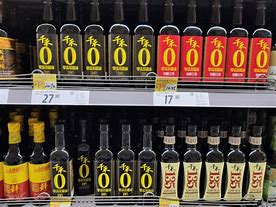d. When the coal has high concentration of sulfur, it may lead to high temperature corrosion of water wall, low temperature corrosion of boiler tail flue, economizer, air preheater, etc. These factors may cause boiler tube explosion, and affect the running state of boiler.
7. Following response are recommended
a. Improve the operator’s operating skills. Make sure all the operators master the coal quality analysis skills, especially the calorific, volatile matter, ash content and particle size etc., so that they will be able to adjust the combustion according to different coal quality.
b. Strengthen all types of technical skills for co-firing and blending combustion. Explore different coal with air flow and other operating parameters by continuous combustion adjustment experiments. On the basis of the experiments, we can keep exploring the coal blending techniques to improve the utilization ratio of poor quality coal, reducing the heating operation cost.
c. Strengthen the combustion adjustment of the boiler. Ensure that the coal and air have proper quantities and enough mixed contact. The furnace chamber is required to keep in high temperature to help combustion. Adjust boiler loading according to the specified operation. To make the boiler run perfectly with the best parameters, operator needs to monitor the furnace pressure, exhaust temperature, oxygen, carbon dioxide, etc. And then check and adjust the boiler for the incomplete combustion caused by uneven carbon particle size and so on.
d. Strengthen the management of coal transportation. Different types of coal is supposed to be stacked separately. If necessary, use a different burning coals at different times, or use the coal in different proportions. In the process of coal transportation, the coal worker must communicate with the stoker on duty in time. For the coal with lower moisture content or more pulverized coal, operator can take a proper stirring to sort out the impurities in, crush the coal with larger size, and adjust the crusher.
e.Enhance the inspection and maintenance of boiler combustion equipment and auxiliary equipment. Eliminate the faults of boiler and its auxiliary equipment in time (Especially the boil sealing, sample feeder, high temperature separator, superheater, economizer, air pre-heater, and dust removal equipment, etc. ).
f. Strengthen the control of boiler air flow and furnace temperature. To keep the furnace chamber in high temperature is beneficial for the ignition and combustion.
g. Enhance the coal storage. Take effective measures to prevent coal from weathering and spontaneous combustion. Reduce the coal quality to increase the difficulty of spontaneous combustion.
h. Enhance the control and management of coal quality. Explore a better and more stable coal market. Timely and accurately grasp the industrial analysis data of coal, and give the data to each workshop. This data can help the operation personnel to select the most proper coal type that is suitable for the boiler.
i. Adopt more mature advanced technology and equipment to change the combustion status.
8. Conclusion
With the increasingly tight supply of coal, the coal quality may have great changes at any time. To explore and research different coal types that is suitable for the current available boilers, maximally reduce the negative influences of the poorer coal quality on combustion, achieve the optimal operation of the boiler, all of these measures, will not only improve the overall economic efficiency, but also ensure the normal operation of the entire system.





